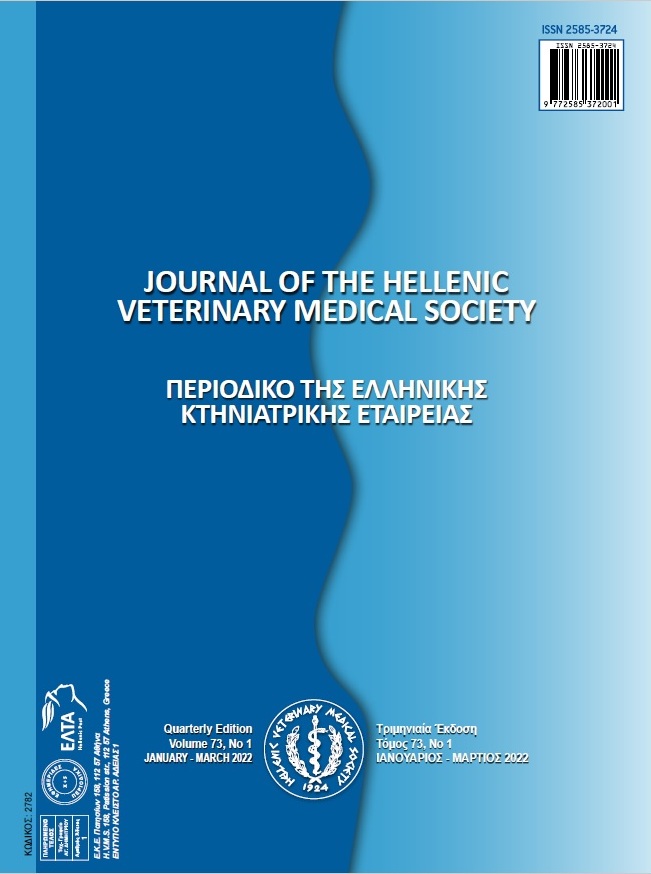Postoperative pain assessment with concurrent administration of intraperitoneal tramadol and incisional lidocaine following ovariohysterectomy in dogs

Abstract
This study aimed to assess postoperative pain with concurrent administration of intraperitoneal tramadol and incisional lidocaine following ovariohysterectomy in dogs. A group of twenty mixed breed female dogs, aged 1–2 years, weighing 19.5 ± 0.8 kg were used. Initially, dogs were sedated with intramuscular administration of acepromazine 1%. Anaesthesia was induced with diazepam (0.5 mg/kg) and ketamine (10 mg/kg) and maintained with 1.5% Isoflurane. Ketoprofen (2 mg/kg) was administered intravenously immediately before surgery. Five minutes before midline incision, saline (0.2 ml/kg) was administered to the muscles and subcutaneous space around the incision in the tramadol-saline (TS) group. Also, in the tramadol-lidocaine (TL) group, lidocaine 2% with epinephrine (1.5 mg/Kg) was administered. Ovariohysterectomy was performed and before closing the linea alba, tramadol (4 mg/kg) was splashed on the abdominal viscera in both groups. Cortisol, vital signs and pain scoring systems were evaluated at different time points. Heart rate, respiratory rate and rectal temperature changes were not significant between groups. Cortisol level showed a significant difference between groups at 1, 3 and 6 hours after surgery (p≤0.05). Both UMPS and CMPS-SF pain scores in the TL group were significantly lower than the TS group at 30 minutes, 1, 3 and 6 hours after surgery (p≤0.05) and also at 12 hours after surgery (p≤0.05). It seems that intraperitoneal administration of tramadol (4 mg/kg) along with administration of incisional lidocaine with epinephrine (1.5 mg/kg) is recommended following ovariohysterectomy in dogs.
Article Details
- How to Cite
-
Peysokhan, M., Sabiza, S., Ronagh, A., & Razi Jalali, M. (2022). Postoperative pain assessment with concurrent administration of intraperitoneal tramadol and incisional lidocaine following ovariohysterectomy in dogs. Journal of the Hellenic Veterinary Medical Society, 73(1), 3597–3604. https://doi.org/10.12681/jhvms.24628
- Issue
- Vol. 73 No. 1 (2022)
- Section
- Research Articles

This work is licensed under a Creative Commons Attribution-NonCommercial 4.0 International License.
Authors who publish with this journal agree to the following terms:
· Authors retain copyright and grant the journal right of first publication with the work simultaneously licensed under a Creative Commons Attribution Non-Commercial License that allows others to share the work with an acknowledgement of the work's authorship and initial publication in this journal.
· Authors are able to enter into separate, additional contractual arrangements for the non-exclusive distribution of the journal's published version of the work (e.g. post it to an institutional repository or publish it in a book), with an acknowledgement of its initial publication in this journal.
· Authors are permitted and encouraged to post their work online (preferably in institutional repositories or on their website) prior to and during the submission process, as it can lead to productive exchanges, as well as earlier and greater citation of published work.


